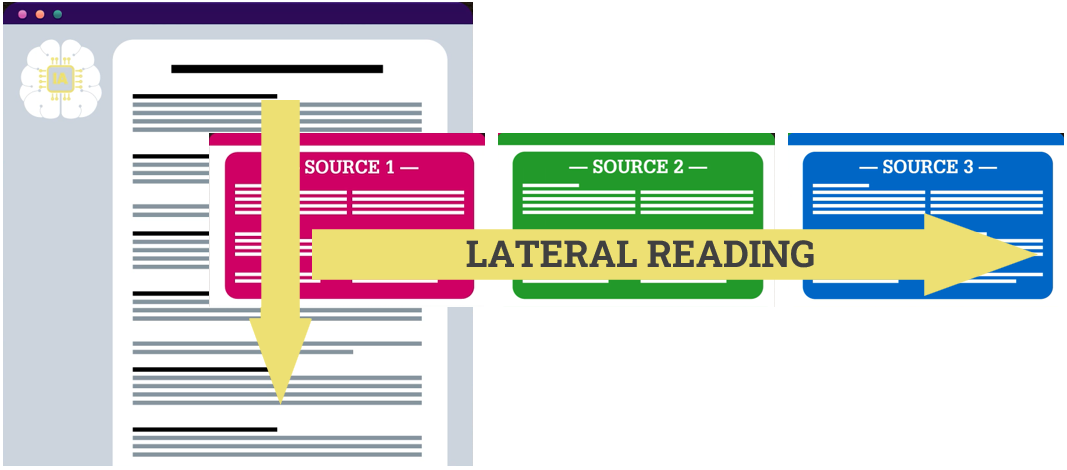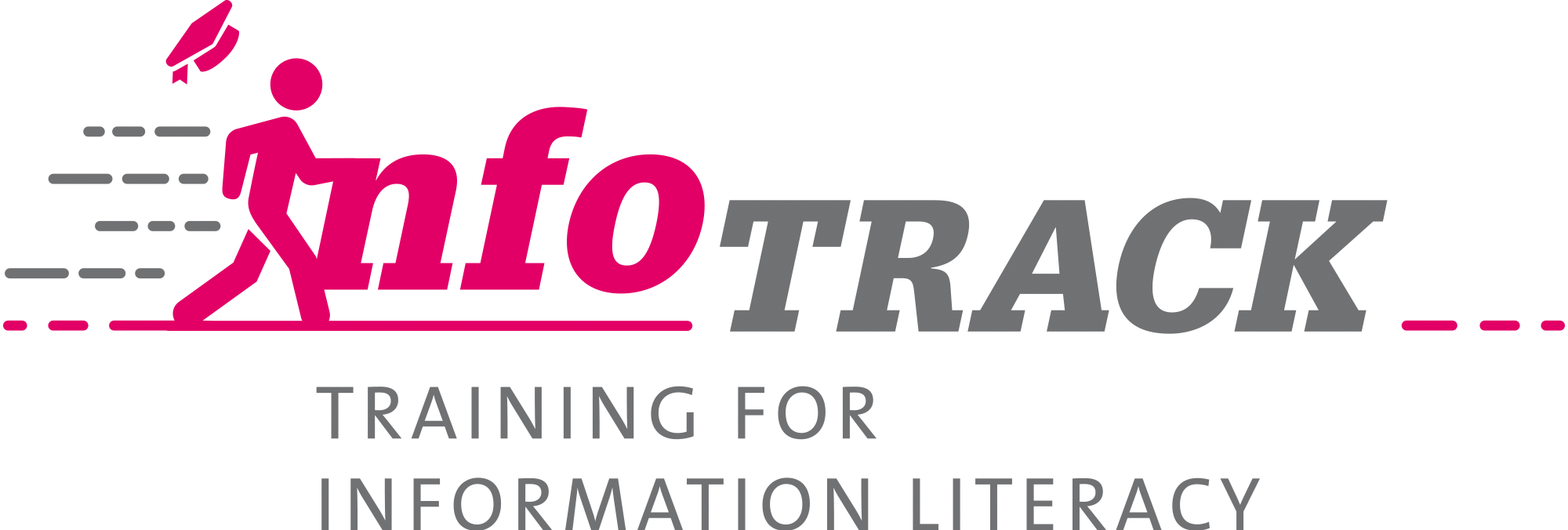- Fact-check GenAI output
For a general introduction to the use of generative AI at the University and the risks involved, watch this video by the University of Geneva:
HORS CLASSE #5 – Intelligence Artificielle Générative
![]()

If you are using GenAI for your academic works, it will be important to be able to verify its outputs using the most important method of analysis available to you: lateral reading. Lateral reading is done when you apply fact-checking techniques by leaving the GenAI output and consulting other sources to evaluate what the AI has provided based on your prompt.
Here's how to fact-check something you got from a GenAI tool:
- Fractionation: isolate specific, searchable claims within the GenAI output.
- Lateral reading: open a new tab and look for supporting pieces of information. Here are some good sources to start with:
- When searching for specific pieces of information: web search, using a search engine
- When seeing if a reference exists: swisscovery UNIGE, Google Scholar or other databases specific to your domain
- Analyze the assumptions:
- What did your prompt assume?
- What did the GenAI assume?
- Who would know things about this topic? Would they have a different perspective than what the GenAI is offering?
- Judgment call: what here is true, what is misleading, and what is factually incorrect?
- Repeat this process for each of the claims the GenAI made.

Eventually, when evaluating AI responses, consider that they may reflect human viewpoints and biases from the data they were trained on, not just factual accuracy.
Check out the videos below to see these lateral reading strategies in action:
- For text and links: Lateral reading in action - 1 Fact-checking
- And for scholarly sources: Lateral reading in action - 2 Checking references
Content adapted from « Artificial Intelligence and Information Literacy » by Maryland University Libraries and Teaching and Learning Transformation Center (TLTC) under CC BY NC license
 Document :
Document :
- Generative Artificial Intelligence: guidebook for the University Community / Université de Genève





